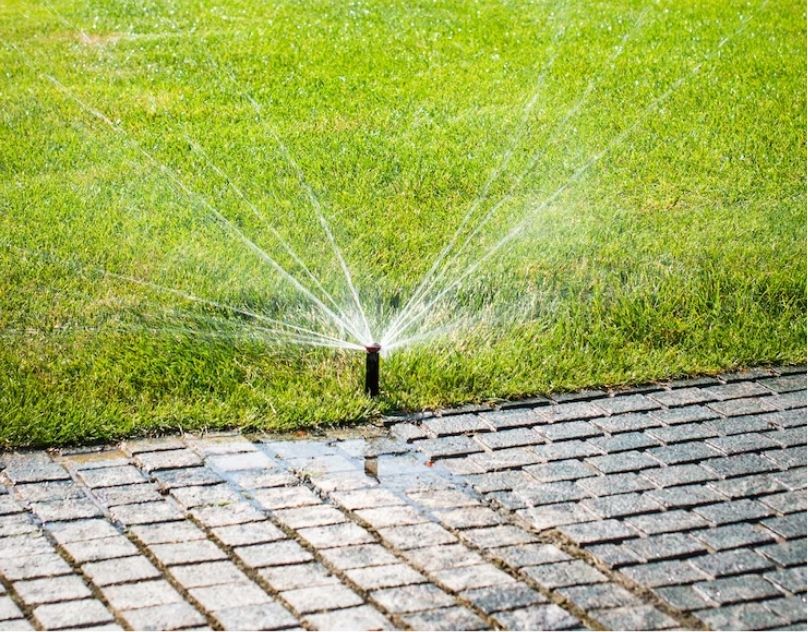A home sprinkler system is a sprinkler that is not only useful for giving your lawn or garden the much-deserved loving care without exhausting yourself but also saves crucial hours for the householder. With the sprinkler, such valuable time is not wasted, and the right amount of water is supplied according to the schedule to plants and grasses. Installing such sprinklers is an effective way of saving water since it is environment-friendly where water conservation is important because of geographical reasons. A vital installation is a pre-condition for effective operation regarding saving water and promoting plant growth. All these things are very important if you are planning to hire professionals, giving you better results.
Understanding Home Sprinkler Systems
Waters your garden adequately through several components at work. At the end of the system, there are pipes that distribute water to many sprinkler heads, each spraying water to a predetermined part of the lawn. These systems are controlled by a timer or even an automated controller that schedules watering times according to preferences. There are different kinds of sprinkler heads made for specific areas or applications: rotor sprinklers, spray sprinklers, and drip irrigation systems. For example, rotor sprinklers are ideal for covering large, open lawns and utilize rotating nozzles. Spray sprinklers are perfect for smaller, tighter areas. Drip irrigation is suited best for flower beds or vegetable gardens as it provides water slowly and steadily directly at the roots. It thus depends on the size of your lawn, your available water pressure, and the plant types you are growing.
Planning the Sprinkler Layout
Proper planning for the installation of the sprinkler system is the key to success. Consideration must be given to planning out an entire system before laying down pipes or realizing sprinklers. Start with the identification of the areas needing irrigation, which could be lawn, flowerbed, or garden areas, and focus on placing the sprinkler heads properly to achieve maximum coverage. The size of the area, type of soil, sun exposure, and water requirements of the plants should all impact decisions about where to put heads. Uniformity in coverage between all zones is a further consideration to keep in mind to avoid overwatering or under-watering. One of the best ways to accomplish this is with a scale map of your garden indicating the location of the sprinkler heads, water lines, and control valves. A good layout will ensure the efficiency of the sprinkler system with minimum water wastage.
Choosing the Right Materials and Tools
One needs to choose the right materials and tools so that the sprinkler system installation lasts and works well. Most sprinkler systems comprise PVC or polyethylene pipes, strong enough to withstand weather changes and high water pressure. Depending on the watering system you choose, the designs of sprinkler heads can vary, making it very important to choose the right equipment for your layout. Various connectors, including elbows, tees, and couplers, are also needed to connect pipes and redirect water as required. Zone control valves let you manage the different areas of irrigation, delivering water to the right areas at the appropriate times.
Digging Trenches for Pipe Installation
The next step, after acquiring all the required materials and having a good plan, is trenching the pipes. The trench depth depends on the pipe type and soil quality. Generally, the trench is 6 to 12 inches deep where pipes are best shielded from above damage. Although can rent one from nearby local hardware stores, much easier and smoother trenching works even when you use a trenching machine. Do remember that when you are making trenches, you slant them a bit so that you can drain them properly. Rather, as this may lead to inefficient irrigation and dampened ground, standing water would accumulate beside the pipes. Possibly try to dig the trenches along natural lines like paths or borders in gardens so that most of the yard is not disturbed. With neat trenches ready, you now go ahead and pipe them and connect them according to your design.
Laying and Connecting the Pipes
Laying the pipes in the trenches after they are ready. The first pipe to be laid in the trenches should be the main supply pipe, that brings water from your water source towards the different zones of sprinklers. Secondly, lateral pipes that extend from the main supply line to the different areas where you want water brought should be connected. That direction and the joining of the pipes should properly be followed because they could keep secure the pipe from leakage. PVC or polyethylene pipes are connected using appropriate connectors and fittings. For fitments made by threads, use Teflon tape to keep the watertight seals in the joints. While putting the pipes into place, check the alignment because poor alignment can lead to inefficiencies or even potential damage. The next process after ensuring the pipes are in place and connections are made is putting the sprinkler heads in place.
Connecting to the Water Supply
Connecting a reliable water source, either a public source, a well, or a rainwater collection system, with the sprinkler system is a significant step in the installation process. Then, when drawing up your system to the water source, make sure that there will be enough pressure and flow rate suitable for your system’s needs. Backflow installation is imperative at this stage because it prevents the flow from the sprinkler system from contaminating potable water, as this might affect the quality of the water. A lot of areas will require this backflow installation, and hence, your household water supply is safe from contamination and efficiently installed. Such a connection will wrap up the joining to water before proceeding to the control system.
Benefits of a Well-Installed Home Irrigation System
Installing and maintaining a home irrigation system is very advantageous. It effectively minimizes water waste by delivering it to the appropriate location and at the time it is needed, thereby ensuring that your plants receive their perfect medium through which to absorb water, rather than having run-off or evaporation occur unnecessarily. In addition, manually watered lawns can be much reduced in time and effort with an automated sprinkler system. This gives one more freedom to do other things or simply enjoy some leisure time.
With proper home sprinkler system installation, you can be assured of an efficient water conservation system. You get a green, beautiful lawn with minimum effort, thus benefiting the environment in the process. With some regular maintenance, it could see many decades of service and convenience in keeping your lawn alive throughout the year!
Read more: Irrigation Methods for Raising Your Yield








Leave a Reply